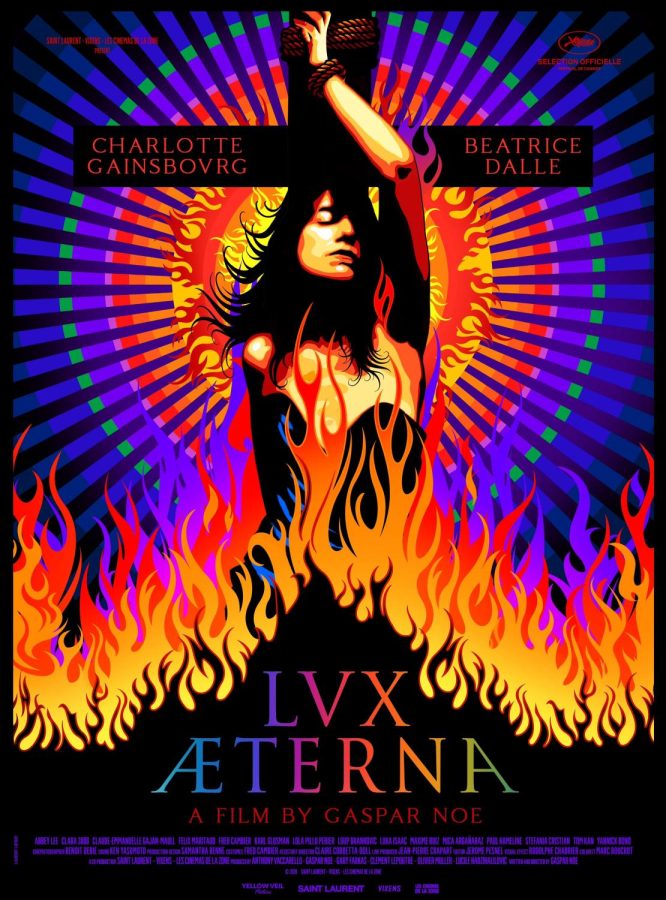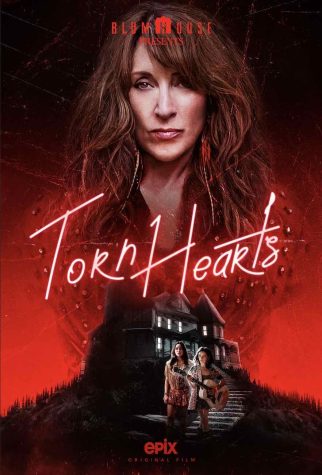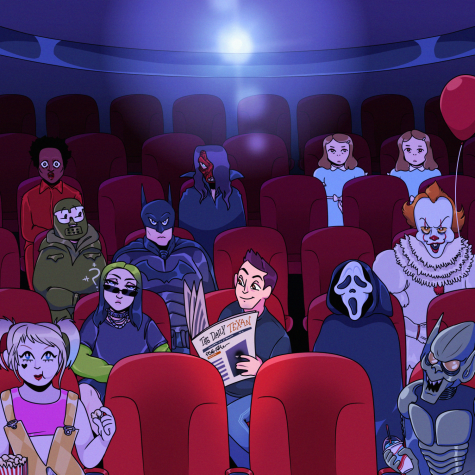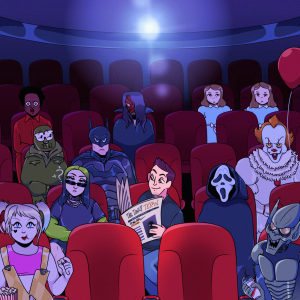Gaspar Noé’s ‘Lux Æterna’ addresses exploitation and inequality in filmmaking industry
May 21, 2022
This article contains spoilers for Gaspar Noé’s “Lux Æterna.”
Gaspar Noé’s experimental movie “Lux Æterna” depicts an unruly film set and addresses the darker sides of filmmaking, such as inequality and exploitation.
“Lux Æterna” screams experimental in many ways, including its lack of a “main character.” The film spends much of its time with two women playing fictionalized versions of themselves — Béatrice Dalle and Charlotte Gainsbourg. Furthering that theme, every character in this movie plays fictional versions of themselves as a result of being challenged to make a movie about witches.
Flashing lights permeate the visual style of this movie. In the last half, the background used in the movie within the movie breaks and starts flickering red, green and blue. While the background flickers, the director of photography continues filming and refuses to let anyone untie the actress who is being traumatized by the situation while tied to a stake. This scene addresses the exploitation and mistreatment of women on film sets, but it ultimately becomes hard to watch due to its flashy visuals. Though powerful, the scene’s lighting definitely detracts from the issues the story is trying to address.
In each scene, the movie displays two side-by-side shots, as if different scenes are being played at the same time. This brings about a chaos that ties into the unruly set theme, forcing audiences to hear many people talking over each other and see all negative elements of the movie set. The dual-perspective style also distracts the audience when certain atrocities take place, as if Noé wanted to create a visual example of how many people turn their heads away from the world’s problems. At one point, an actress is forced to be topless in a scene in the movie within the movie and argues that this request was not within her contract, but the other side of the screen shows several men discussing the scene they are about to shoot. This visual dichotomy hides the exploitation from the audience, mirroring real life cover-ups of these deeds.
This movie is commendable for its discussion of problems that plague filmmaking, portraying injustice in a way that makes audiences uncomfortable. Noé creates a tension-filled and voyeuristic watching experience that forces viewers to witness all the wrongdoings of the people on set without any control of the situation — the audience can’t do anything but watch.
This movie stands out as a 52-minute experiment that addresses the issues many women face within the film industry. While “Lux Æterna,” does not stand out as an entertaining movie, its psychedelic visual style mixed with deep messaging makes this movie worth audiences’ time.
3 ½ angry producers out of 5









